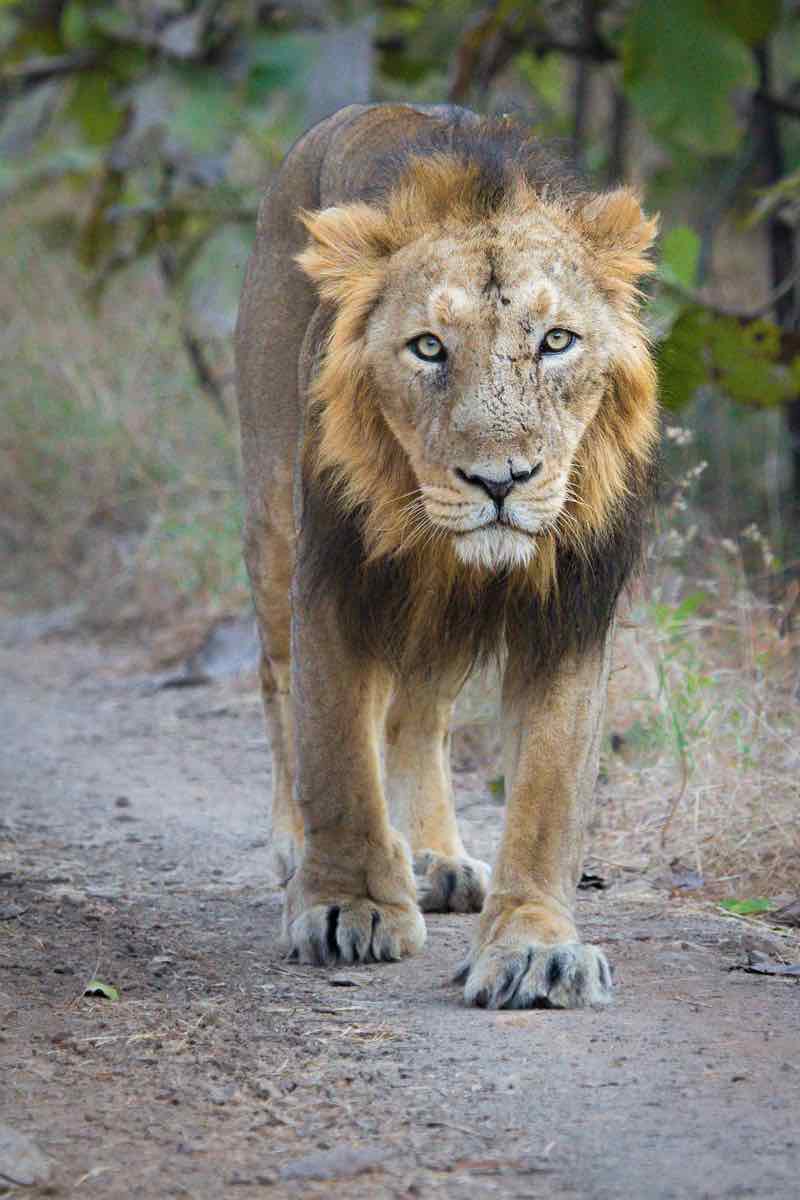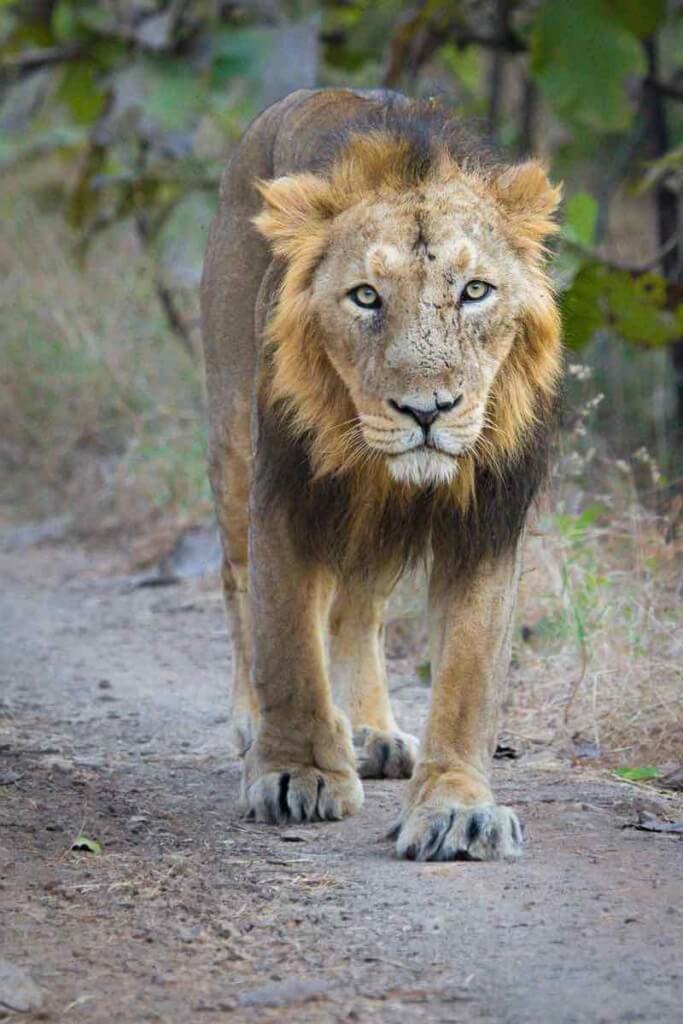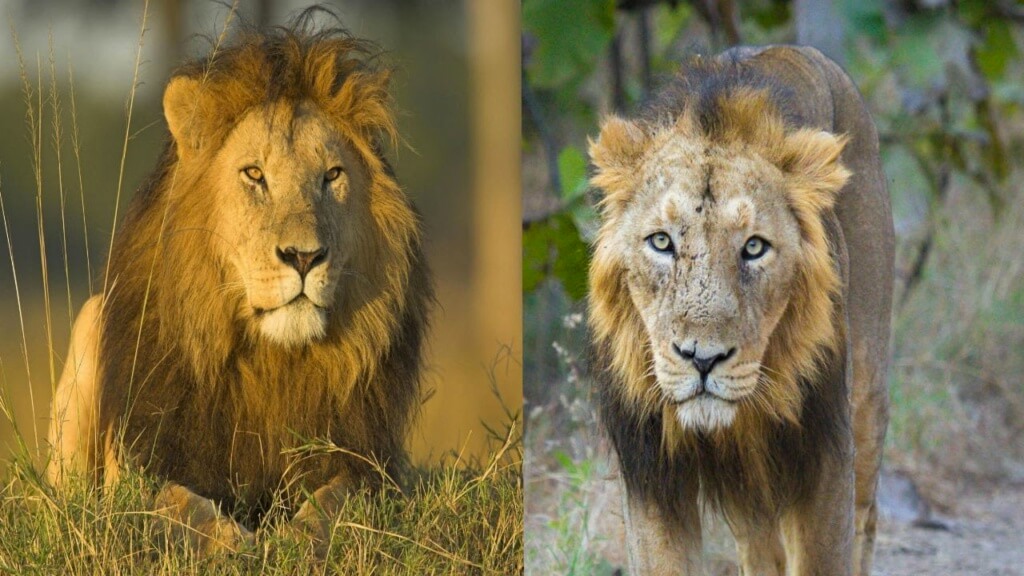Asiatic Lion – the Pride of Gujarat

The Asiatic Lion – The Pride of Gujarat
Nearly all of wild lions that exist in the world today live in the sub-Saharan Africa except one small population of Lions that exist in Gir Forest here in India this subspecies is called Asiatic Lion.

The Asiatic lion also known as the Indian lion or Persian lion, is a lion subspecies that exists as a single population in India’s Gujarat state. It is listed as Endangered due to its small population size. Since 2010, the lion population in the Gir Forest National Park has steadily increased.
African Lion v/s Asiatic Lion
It differs from the African lion by less inflated auditory bullae, a larger tail tuft and a less developed mane. See the image below and you will clearly spot the differences.

The most striking morphological character, which is always seen in Asiatic lions, and seldom in African lions, is a longitudinal fold of skin running along its belly. Also Asiatic lions are slightly smaller than African lions.
The Lost Habitat
The Asiatic lions used to live in West, South and Central regions of Asia and in Eastern Europe in historic times. Now the population of the lions currently exists in Western India’s Gir Forest National Park. Asiatic lions formerly occurred in Persia, Arabia, Palestine, Mesopotamia and Baluchistan.
In India, Asiatic lions once ranged to the state of Bengal, but declined under heavy hunting pressure. In the early 19th century, they were found in north-western and central India in Hariana, Khandesh (in modern-day Maharashtra), Rajasthan, Sindh, and eastward as far as Palamu and Rewa, Madhya Pradesh. Heavy hunting by British colonial officers and their Indian vassal rulers led to a steady and marked decline of lion numbers in the country. Asiatic lions were exterminated in Palamau by 1814, in Baroda, Haryana and Ahmedabad in the 1830s, in Kot Diji and Damoh in the 1840s. During the Indian Rebellion of 1857, a British officer shot 300 lions. The last lions of Gwalior and Rewah were shot in the 1860s. By 1880 no lion survived in Guna, Deesa and Palanpur, and only about a dozen lions were left in the Junagadh district. By the turn of the century, they were confined to the Gir Forest and protected by the Nawab of Junagadh in his private hunting grounds
The Stats
In May 2015, the 14th Asiatic Lion Census was conducted over an area of about 20,000 km2 (7,700 sq mi); the lion population was estimated at 523 individuals, comprising 109 adult males, 201 adult females and 213 cubs (sub-adult lions). It was 411 in year 2010 and has gone up whopping 27% in the 5-year period!!
The report said 268 lions were counted in Junagadh district while 44 were there in neighbouring Gir Somnath. Similarly, 174 lions were counted in Amreli district while 37 others were spotted in Bhavnagar.
Court Order
The Supreme court, keeping the best interests of the Lion, had ordered trans-location of the big cats in 2013 to Kuno-Palpur Sanctuary in Madhya Pradesh observing that creating an alternative population of Asiatic lions was in the best interest of the species as its only sub-population in Gujarat could face trouble in face of natural calamities or disease. Due to various reasons this is yet to be implemented.
————————————–
WildTrails of India – “One Stop Destination for all Indian Wildlife Enthusiasts“
PS: Please be a responsible wildlife tourist; No littering, No sounds, No feeding, no getting down from the safari jeep (when on safari), No phone calls. Remember that we are visiting their home and when we are there, let’s follow their rules.
[The WildTrails of India is the best way to get all the details about Indian wildlife sanctuaries (best travel times, safari details, animal sightings, forest accommodations pairing, wildlife related activities, prices, etc). Learn more about WildTrails of India here. ios App is here. Android is here, and Web is on the way. Please do like us on our facebook page here.
Download Highway Help App (iOS & Android) which is your friend on the Indian Highways to be your highway friend and companion.
Thanks]
————————————–
With 4 years of Sightings data + Extensive expert tracker network in jungles, our customers had the best wildlife experiences.
Buy Wildlife Fashion Accessories
Exclusive Online Store for wildlife products
Packages
Packages Loading...
Recent Posts








